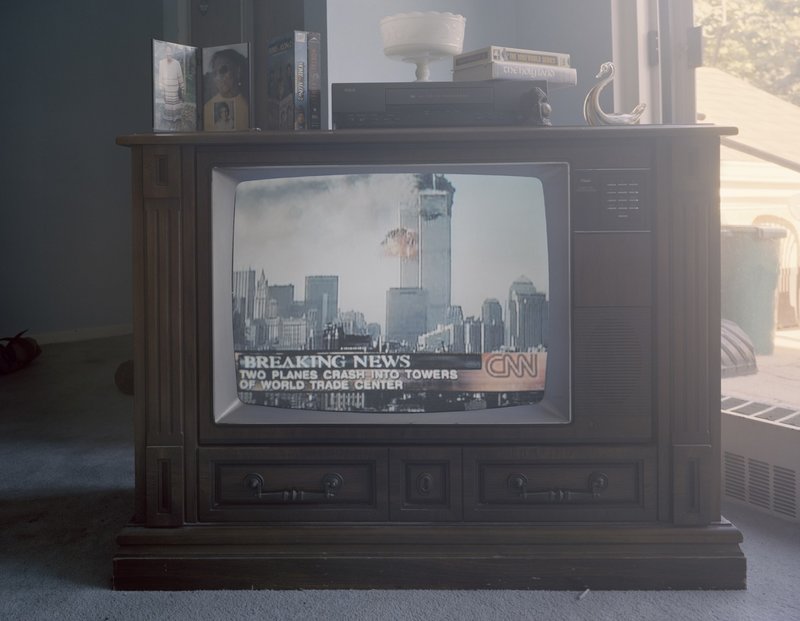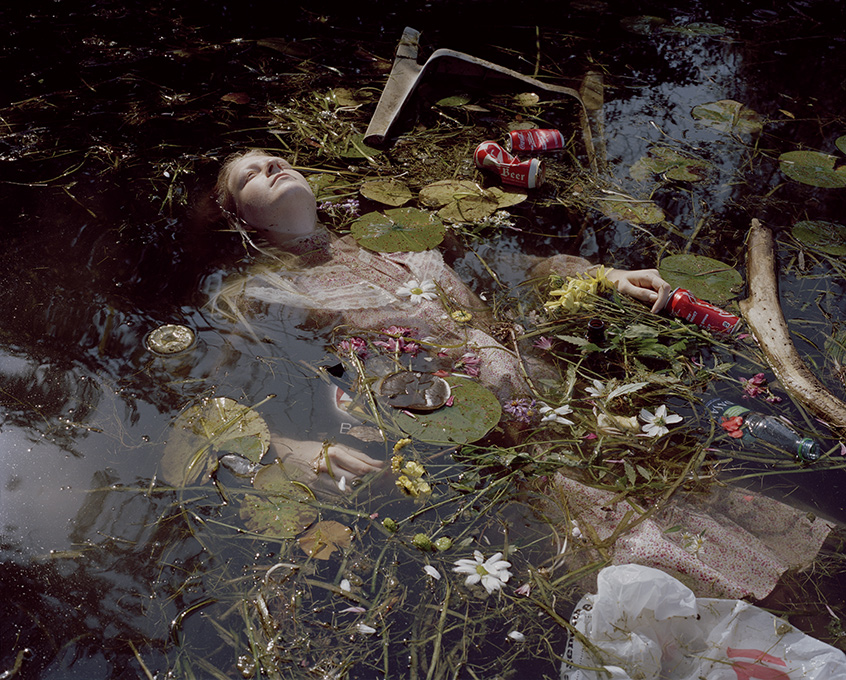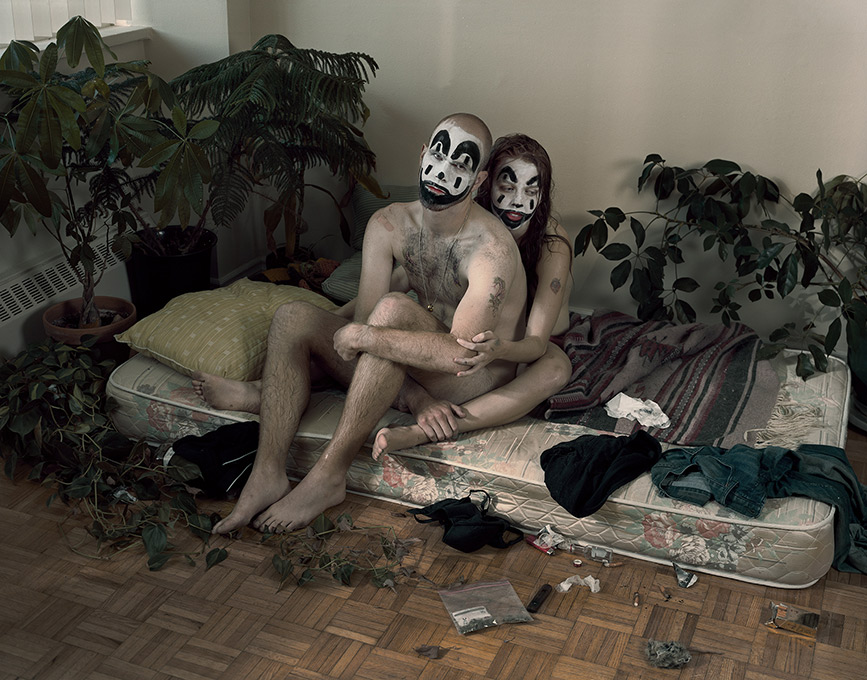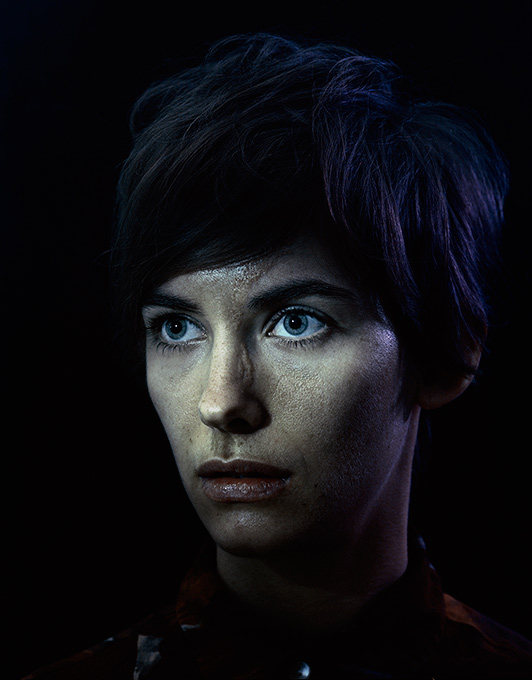Exuberant storyteller Brendan George Ko reminds us of our culture’s apocalyptic convictions, the stereotypical players involved – and in doing so, reveals the naiveté of these fantasies in his exhibition We Soon Be Nigh! at LE Gallery for Scotiabank CONTACT Photography Festival. Drawn to our obsession with the ‘end of the world as we know it’ through Hollywood source materials, Brendan George Ko has been collecting clips from apocalyptic films since the infamously doomed year of 2012 to produce a montage titled “The Apocalypse as a Metaphor Part 1” (2016). Included in the seamlessly edited homage are scenes from “2012, War of the Worlds, Poltergeist, Children of Men, The Day After Tomorrow” and “Dante’s Peak.” Culled from these Hollywood gems are sequences of catalysts, anticipation, failed getaways and final events, defined by natural disasters, extra terrestrial invasions, ghosts, disease and religious rapture. The films chosen do not include Zombies as I expected because Ko has deemed this genre as post-apocalyptic – a theme with enough footage to assemble another montage all its own.
 Brendan George Ko, Ground Zero (State of Ambivalence), 2012, c-print, 20” x 24”
Brendan George Ko, Ground Zero (State of Ambivalence), 2012, c-print, 20” x 24”
From these predictable story-lines, he produced photographs of stereotypical apocalyptic participants including the doomsayers, survivalists, the average American, the witness, the outsiders and the lost tribe. “Suspense (The Witness)” (2015) is a large close up of a woman’s face. The background is completely black, her face lit up across her eyes and the bridge of her nose as if she were hiding in wait, watching through a slit, or witnessing a bright flash. Placed across from the Film in the gallery space, we mimic her ready yet passive gaze towards the film in aw of our sure demise. “Ground Zero (State of Ambivalence)” (2012) depicts an aging, dismayed, middle class man on a concrete balcony with dust settling on the left. The photograph, shot in 2012 in reference to a world-changing event over ten years earlier (as implied by the title), the image seems more like a staged scene in which a common helpless reaction is captured.
“Ground Zero” is hung across from two photographs that represent the two real events that instigated Ko’s interest in apocalypse. The manipulated, found NASA image of the Challenger explosion, titled “Challenger (The Accident)” (1986-2012) was taken around the time Brendan George Ko was born, and marked for the public the danger of space exploration. The photograph, taken from the ground with no visible carnage or debris, demonstrates the way in which he imagines the world frozen in shock, looking upward – a motif found also in “The Apocalypse as a Metaphor Part 1.” The second event occurred at a more affective and memorable age for George Ko. 9/11 was another moment in which the world seemed to stand still and war took on a new enemy. Despite the reality and pervasive imagery of this event, he has placed the CNN coverage of the towers in a staged living room for the photograph “Nine Eleven (The Marker)” (2010). “Nine Eleven”, in a staged living room, is a reminder that in internationally recognized events we each have our own unforgettable context of reception, but also that in fictionalized ones, Hollywood has control on our singular mass experience.
 Brendan George Ko, Nine Eleven (The Marker), 2011 – 2011, c-print, 20” x 24”
Brendan George Ko, Nine Eleven (The Marker), 2011 – 2011, c-print, 20” x 24”
Brendan George Ko expresses his own opinions about apocalyptic fantasies and how he sees the reality of our fate. In contemporary and historical apocalyptic tales, the catalysts are usually external, mysterious and uncontrollable forces. Ultimately, this finger pointing is a way to offset the guilt and responsibility for horrifying prospects. In Ko’s photograph “Product Placement (Malthusian Catastrophe)” (2013), the Lady of Shalotte is de-romanticized by the polluting garbage that floats alongside her corpse like a Lays product placement would seem in Lars von Trier’s “Melancholia.” Ko expresses frustration with our approaching doom as it is not an external force, it is one of natural asphyxiation by pollution, one that could be stopped, but that will never be taken seriously in the face of other potential apocalypses.
 Brendan George Ko, Product Placement (Malthusian Catastrophe), 2013, c-print, 30” x 40”
Brendan George Ko, Product Placement (Malthusian Catastrophe), 2013, c-print, 30” x 40”
By including both real and fantastical events, the definition for apocalypse is clearly delineated. Real apocalyptic events mark ‘the end of the world as we know it’, meaning a shifting attitude, or declaration of war, but not necessarily the end of mankind. Hollywood’s version of apocalypse is explosive and entertaining. Nevertheless, each occurrence will produce the stereotypes captured by Brendan George Ko including climate change conspirators and zombie cult survivalists.
 Brendan George Ko, Each Other (The Outsider), 2014, c-print, 20” x 24”
Brendan George Ko, Each Other (The Outsider), 2014, c-print, 20” x 24”
Alice Pelot
Image courtesy of LE Gallery
*Exhibition information: LE Gallery, May 6 – 28, 2016, 1183 Dundas Street West, Toronto. Gallery hours: Wed – Sat, 12 – 6 p.m.

